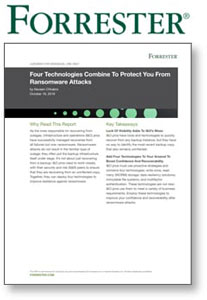Request a Demo
Join a 30 minute demo with a Cloudian expert.
Did you know that ransomware strikes multiple times every minute? It’s a huge and growing threat, so the logical question is how can your organization protect itself.
You can harden your systems, work diligently on security awareness, and redouble your efforts to prevent malware infections – which are all important. But complex systems result in a complex array of vulnerabilities, and it only takes one to become a victim.
That’s why it’s so important to have an attack-proof recovery strategy in place. One way to thwart ransomware’s encryption is through secure backup. If you can roll back to a previous version of your data – captured before the infection occurred – you can bypass the infection by performing a restore and get back into business.
But just any old backup won’t work. Ransomware can also attack the backup files themselves. Without the right approach, you can re-infect yourself during a restore.
Forrester analysts write:
What’s needed is the ability to store data in a manner in which the data is unchangeable – something Cloudian HyperStore does as a natural part of its operation. Block and file storage structures are readily encrypted, making them great targets for ransomware. But object storage can be made immutable – data remains as written — with WORM (Write Once, Read Many) technology. Cloudian’s WORM feature allows HyperStore to protect data for the retention period you specify. During that time, the data can neither be modified nor deleted, creating an additional security layer. Furthermore, the data is immediately accessible, eliminating the need for a lengthy backup process.
Cloudian’s policy-based data protection features also let you replicate that data to multiple sites, or to the public cloud if desired. So your data is protected from site-specific threats as well.
In the event of a malware attack, restoring your data becomes a simple task of recovery. Administrators roll back to the last snapshot before the ransomware was executed, perform a restore, and your data is back in business.
In the past, WORM technology required specialized storage devices and a workflow that accommodated them. But now object storage systems equipped with a new feature called “Object Lock” deliver WORM functionality within an enterprise storage system. This means that the data is protected at the device level, rather than needing an external layer for defense.
Another advantage is that Object Lock is a standardized feature supported by multiple data protection software platforms. IT managers can, therefore, leverage Object Lock within an automated workflow, eliminating the need to separately manage protected copies of data.
Learn more about how WORM/Object Lock can protect you against ransomware.
Visit our Ransomware Solutions page.

Object Storage vs. File Storage
Object Storage vs. Block Storage